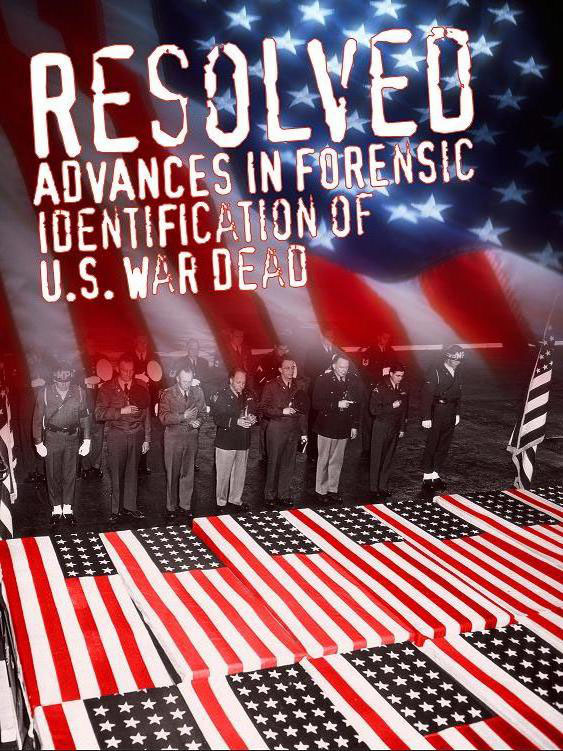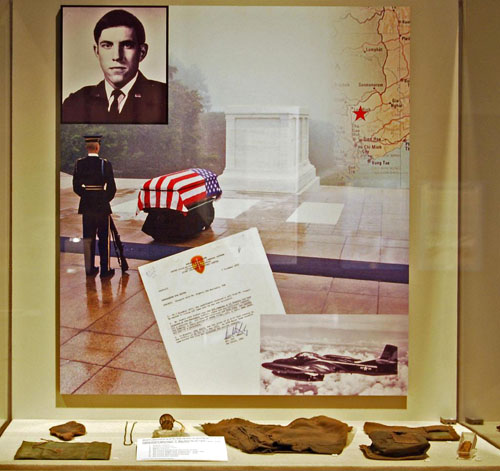Resolved: Advances in Forensic Identification of U.S War Dead
Case Study: Michael J. Blassie
 "Show me the manner in which a nation or community cares for its dead and I will measure with mathematical exactness the tender mercies of its people"
"Show me the manner in which a nation or community cares for its dead and I will measure with mathematical exactness the tender mercies of its people"
— W.E. Gladstone
A RESOLVED Case Study: 1Lt Michael J. Blassie
Michael Joseph Blassie entered the Air Force Academy in 1966 and received his officer's commission in June 1970. During his tour of duty in Vietnam, he served as a member of the 8th Special Operations Squadron. He served with distinction and was awarded the Silver Star, the Distinguished Flying Cross, and the Air Medal with four Oak Leaf Clusters for his meritorious service.
On May 11, 1972, 1Lt Michael J. Blassie was on a ground support mission in Song Be Province, Republic of South Vietnam, when his A-37 Dragonfly came under intense enemy anti-aircraft fire. Another pilot in the flight reported seeing Blassie's aircraft impact the ground near the village of An Loc where it exploded and burned. Enemy activity in the area precluded a recovery attempt at the time of the crash
In late October 1972, a South Vietnamese Army patrol recovered a pelvis, upper arm bone, and some ribs, as well as associated material evidence, including personal effects and identification tags for Blassie. The remains, along with the associated materials, were eventually accessioned at the U.S. Army Mortuary at Tan Son Nhut as TSN 0673-72. The remains and material evidence remained with the Central Identification Laboratory in Southeast Asia until they were moved with the laboratory when it returned to Hawaii in 1976.
Given the physical evidence associated with the human remains, they were initially designated "Believed To Be" (BTB) Michael J. Blassie. Scientific analysis of the remains in Hawaii in 1978 suggested that the remains were inconsistent with Blassie's age and height. Based on these findings, the Armed Services Graves Registration Office removed the alleged name association of Michael J. Blassie, consequently re-designating them as unknown remains, X-26.
On May 28, 1984, in an effort to honor all who served in Vietnam, the remains of X-26 were interred as the Vietnam Unknown Soldier and buried with military honors in the Tomb of the Unknowns at Arlington National Cemetery.
Due to advances in DNA technology, the Tomb of the Unknowns was opened and the remains of X-26 were removed for analysis on May 14, 1998. Bone samples from X-26 were taken to AFDIL for mtDNA sequencing. The mtDNA sequences obtained from the bones were compared to reference mtDNA samples from maternal relatives of seven service members who were reported missing near the location where the remains of X-26 were found.
The mtDNA results from X-26 excluded six of the families and matched exactly the two family reference samples submitted by Blassie's mother and sister. On June 22, 1998, the Central Identification Laboratory identified 1Lt Michael J. Blassie using the results of anthropological and mtDNA analyses to the exclusion of all other possibilities.
The remains of 1Lt Michael J. Blassie, escorted by an Air Force honor guard, left the Armed Forces Institute of Pathology on July 9, 1998, and began the journey back home to Missouri. On July 11, 1998, he was buried with full military honors in Jefferson Barracks National Cemetery.
Click here to visit the virtual exhibit "Naming the Vietnam Unknown: Michael Joseph Blassie Comes Home."
About Forensic Anthropology
Forensic anthropology is the scientific discipline that analyzes the human skeleton in order to establish a biological profile – an estimation of an unidentified person's age, sex, stature, ancestry, and signs of trauma or pathology. The profile limits the number of possibilities for identification by excluding individuals that do not fit the biological description. When a person matches a biological profile, a tentative identification is established, which is later confirmed or rejected by fingerprinting, dental, and/or DNA analyses. In cases of multiple fatalities such as in transportation accidents, combat, and acts of terrorism, anthropologists sort commingled remains of multiple individuals into single individuals for identification.
About RESOLVED
Before the Civil War, the United States had no national policy or program prepared to deal with the identification of war dead. Many service members remained unidentified, buried in nameless graves across the nation’s landscape. This experience gave rise to the military’s current responsibility to identify those who died while in service to this country.
RESOLVED highlights the underlying forensic sciences that have evolved in fulfilling this nation’s commitment to the identification and commemoration of the U.S. service member.
This exhibition presents the six lines of evidence critical to the positive identification of a deceased service member. The sequence -- starting with Material Evidence, then Fingerprinting, Dentistry, Anthropology, Pathology, and DNA – reflect the real-world process that a service member’s remains follow at the mortuary, leading to a scientific identification.




